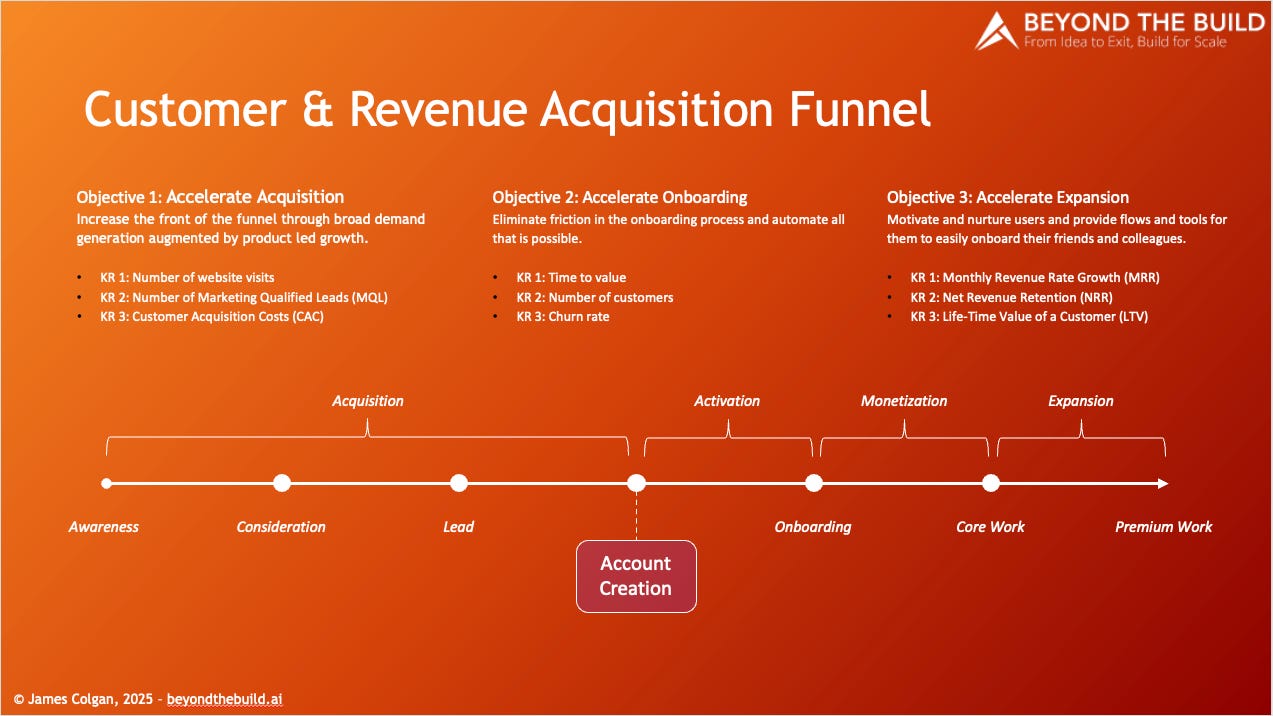The Playbook That Turns Product-Led Theory Into Actual Growth
From Microsoft to Slack to your Early Stage startup - a framework that actually scales
Hey founders, product leaders, and startup operators -
If you're like most of the exec teams I work with, your startup has a solid product, some early traction, and a decent shot at the market.
But here’s the problem:
✅ You’ve got users, but not enough revenue
✅ You’re shipping features, but CAC is creeping up
✅ You’ve got PLG goals, but growth still depends on heroic sales or founder energy
You’re not alone.
PLG isn’t magic. It’s a system. And most startups are trying to wing it with tactics instead of a playbook.
That’s why I wrote “Building Your Product-Led Growth Company”, a 10-step playbook based on what actually works - not just at Microsoft, Slack, and Spendesk, but at startups I’ve advised across the US and Europe.
The whole thing is free to download with the code FOUNDER:
Here’s a preview of what’s inside.
How Microsoft Beat Google at PLG (Really)
Gmail had everything: better UI, self-serve onboarding, freemium model - the textbook PLG motion. Outlook Mobile didn’t stand a chance… until we flipped the script and built PLG into the product itself.
We embedded growth mechanics directly into the UX. That single shift unlocked a multi-billion dollar business line for Microsoft.
Takeaway: You don’t need to be first or flashiest - you need a system that scales distribution through your product.
The Metrics That Actually Matter
Forget DAUs for a second. You need to be obsessed with two metrics:
Net Revenue Retention (NRR): Are customers sticking, expanding, and advocating?
CAC Payback: How fast do you recoup what you spend to acquire them?
The best PLG companies grow with NRR > 115% and CAC Payback < 12 months.
This playbook shows you how to design your product and GTM org to hit those benchmarks - not just admire them from afar.
You’re Probably Monetizing Too Early
Hard truth: If you're charging before the user has seen real value, you’re killing conversion and retention before it even starts.
Great PLG companies delay monetization to deliver delight first. Slack did it. Duolingo did it. Outlook Mobile did it. So should you.
Takeaway: Move the paywall back. Let users fall in love first. They’ll invite others, reduce CAC, and convert when it counts.
From Random Wins to Repeatable Growth
By the time you reach $10M ARR, success isn’t about features. It’s about alignment.
Product defines PQLs
PMM drives conversion
Growth builds in-product loops
Data actually connects the funnel
You stop guessing. You start scaling.
Takeaway: PLG is a team sport. The fastest growing companies don’t guess - they operationalize.
A Framework for Every Phase
The playbook walks you step-by-step through the key transitions in a startup’s PLG journey:
Early MVP & manual onboarding
First user-to-user growth loops
Product-market messaging alignment
CAC payback & NRR diagnostics
Freemium vs. Premium modeling
Customer journey automation
Instrumentation & PQL conversion
Efficient scale without bloating the team
Immersive experiences pre-signup
Multi-product expansion readiness
Each chapter includes benchmarks, company examples, and tactical moves you can apply this quarter.
Why I Wrote This
I’ve helped scale product orgs at Microsoft, Slack, Spendesk, and as an advisor to tons of venture-backed startups. I’ve seen what breaks growth at every stage - and what fixes it.
This playbook is the guide I wish I had when I started.
It’s free to download - just use the code FOUNDER:
If you’re building in public, scaling fast, or just tired of “random acts of growth,” this is for you.
Let me know what resonates,
- James
PS: If you're a founder or product leader trying to figure out what to build next, when to monetize, or how to hit your next round’s metrics - I’d love to help.
TL;DR (for your team Slack) ❤️
PLG isn’t magic. It’s a system. This free (for now!) 10-step playbook shows you how to scale from MVP to Exit with repeatable, efficient growth.


